Calcite and dolomite are everywhere! You might not see them right away, but they play a huge part in our everyday lives. From towering mountains to the chalk you use at school, these minerals practically envelop us with their uses.
Although they might look closely similar like two peas in a pod, they have their own unique personalities. In fact, there are tons of differences between calcite and dolomite.
We’re going to show you how they differ, why people commonly mistake them, and how you can easily tell them apart.
The Major Differences
Just like siblings, calcite and dolomite may look quite alike, and they do share some traits. But these two natural wonders also have their own quirks that make them special. Here are some of their differences:
Color – Dolomite has more subdued colors and less variations
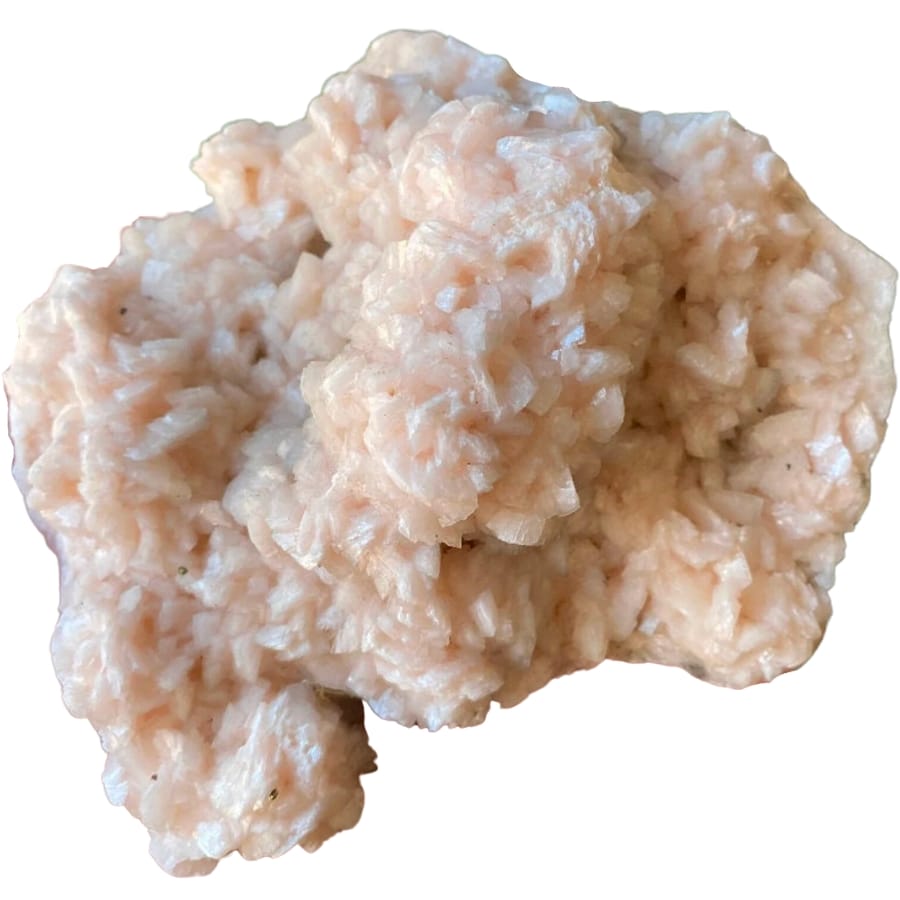
Both calcite and dolomite show up in a variety of colors, but each has its own typical color palette. It’s like calcite had a box of crayons with more vibrant colors, while dolomite had a box with more subtle shades.
Calcite is kind of a show-off when it comes to colors. It can be found in a bunch of different hues like white, clear, pink, blue, green, and yellow. It’s like nature’s own rainbow trapped inside a rock.
This wide range of colors in calcite comes from various impurities, like different metals, that sneak into its structure. For example, if you find a piece of this rock that’s pink, it might be because of some manganese hanging out in there.
On the other hand, dolomite tends to stick to a more classic look. It’s usually found in colors like white, gray, or pink. But don’t think that makes it boring! These colors have their own kind of elegance. The pink one is pretty and has a soft, pastel tone.
Even though both minerals can be white, which might seem like they’re tricking us, their white tones are a bit different. Calcite’s white can be really bright and shiny, while dolomite’s white is more like an overcast sky, a bit more muted.
Luster – Calcite exhibits a vitreous luster
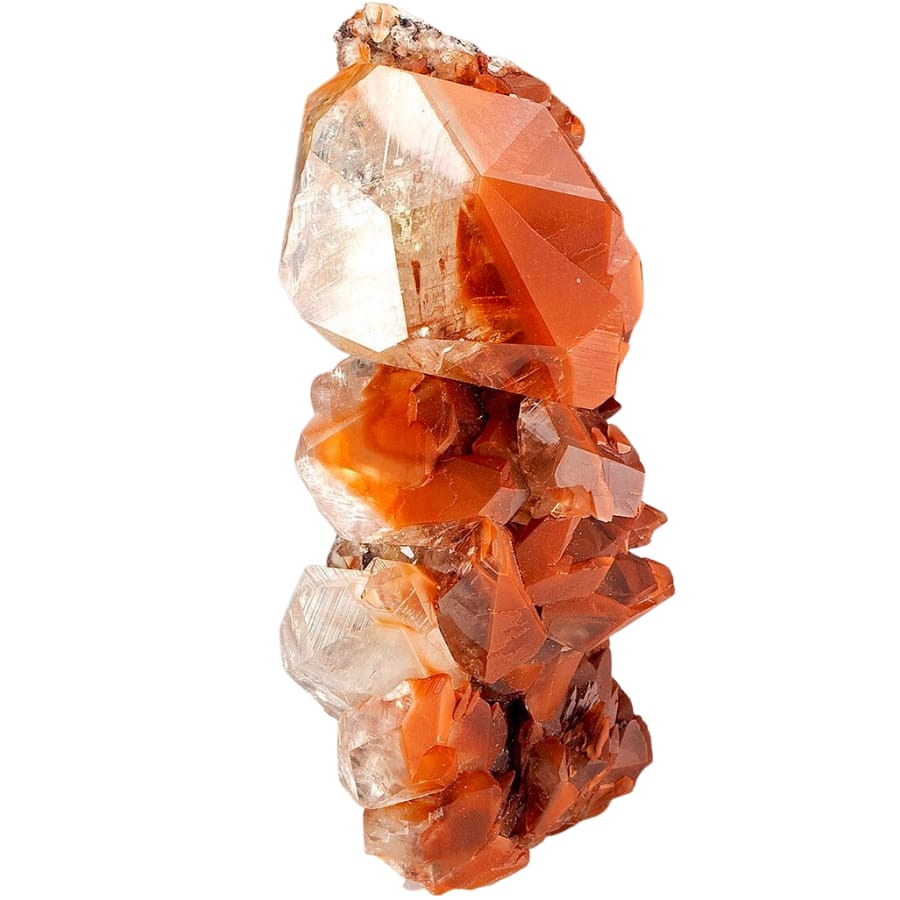
Luster is the sparkle or shine you see on a mineral’s surface, and it tells us a lot about how light plays with calcite and dolomite. Think of it as the way a mineral looks under light, kind of like how shiny or dull it is.
Calcite is often the star of the show with its shiny, glass-like luster. When you hold a piece of it up to the light, it glows and sparkles as if it were made of glass. This bright, shiny look is called a vitreous luster.
It’s like looking at a windowpane or a clear, sparkly crystal. Calcite catches the light in such a way that it can make you think of sunlight bouncing off the water.
Dolomite, on the other hand, has a more laid-back kind of luster. It usually has a pearly or matte finish, which is less flashy. If calcite is like a shiny glass window, then dolomite is more like a pearl or a smooth pebble.
Its luster is softer and doesn’t reflect light as brightly as calcite. This gives dolomite a more subtle and elegant appearance, like the gentle glow of a pearl necklace.
Crystal Structure – Dolomite forms distinct curved crystal faces
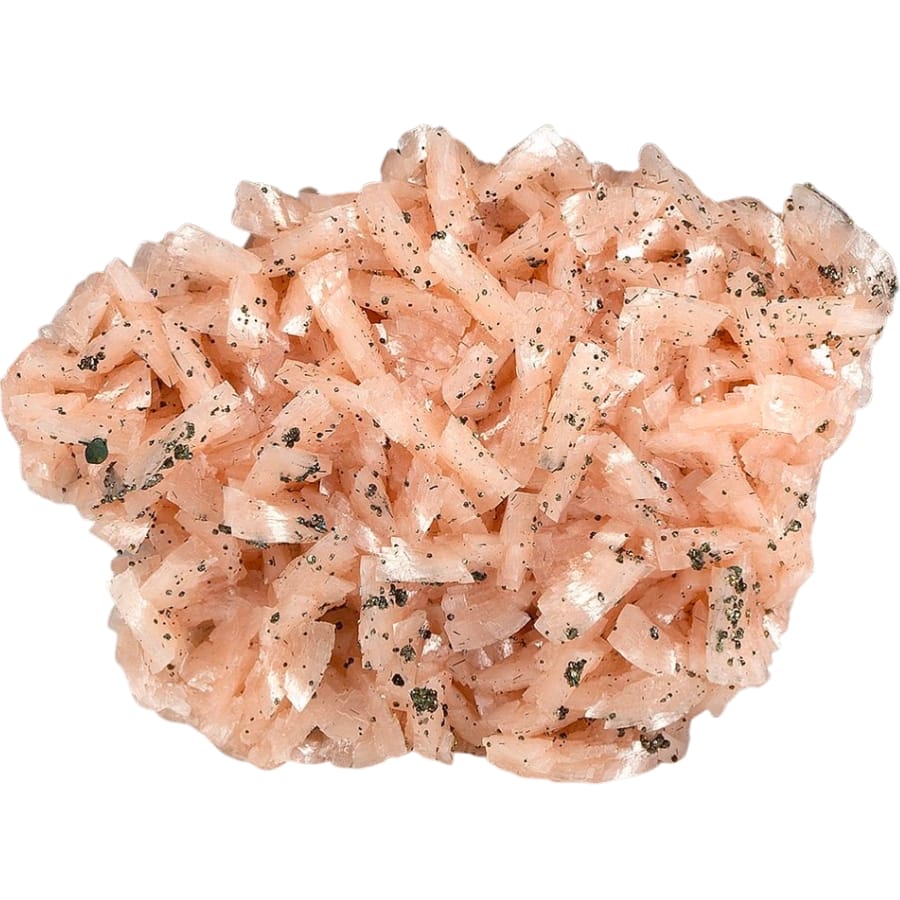
The crystal structure is the blueprint of how a mineral’s tiny parts are put together. It’s like a secret recipe that nature uses to make each mineral look different. Although they might seem similar, calcite and dolomite differ in this trait.
Imagine you were building something with blocks. Calcite’s crystal structure is like one type of block that forms shapes like rhombohedra, which are like stretched-out cubes, or scalenohedra, which are longer and have more slanted sides.
These shapes are pretty cool because they show how calcite’s tiny pieces are arranged in a neat, orderly way. This arrangement makes its crystals often look shiny and sharp.
Dolomite, on the other hand, is like using a different set of blocks to make more compact and less flashy shapes. Its crystals usually don’t have the same sharp and clear angles as calcite.
Instead, they form more subtle and rounded shapes, sometimes even curved, which are known as saddle shapes. These crystals aren’t as showy as calcite, but they have their own kind of beauty.
Cleavage – Calcite exhibits perfect cleavage in three directions
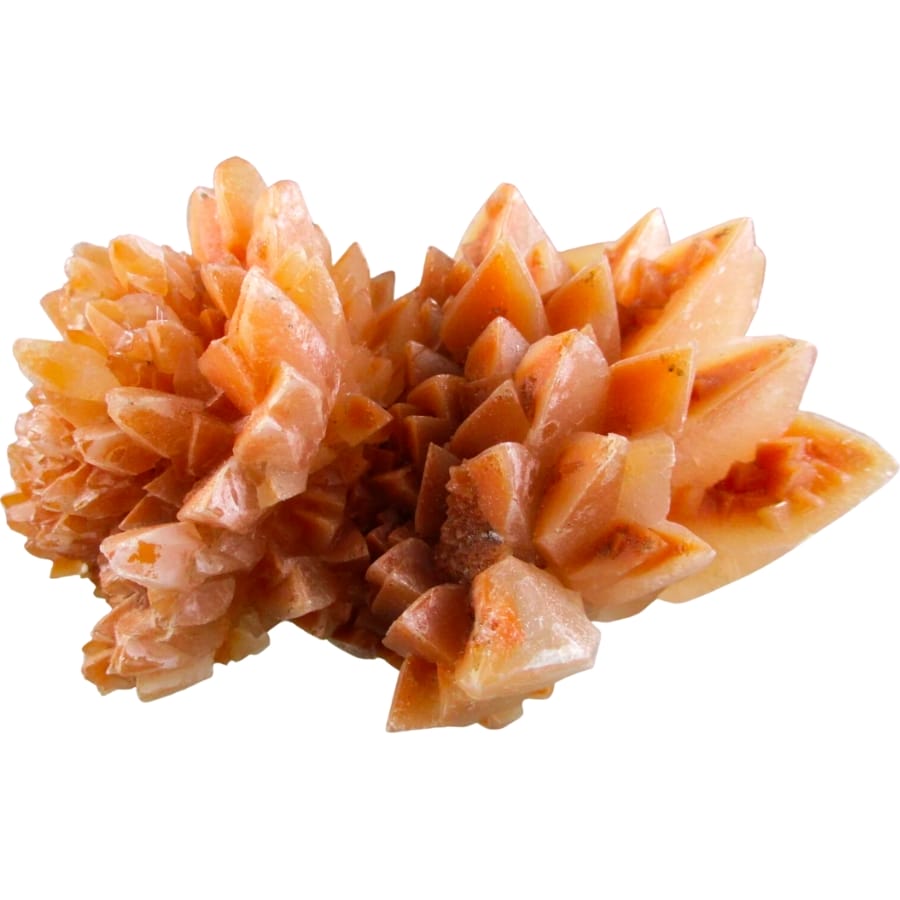
Cleavage in minerals is about how they break along certain lines. It’s like when you break a bar of chocolate along its squares— the chocolate has a natural way it likes to break.
Calcite breaks smoothly in three different directions. Imagine if you had a cube of butter and you could slice it cleanly into smaller cubes. That’s sort of what happens with this rock.
When it breaks, it tends to form flat, shiny surfaces that look like little stair steps. This perfect cleavage makes calcite unique and easy to spot.
Dolomite’s cleavage is a bit different. It also breaks in three directions, but not as perfectly as calcite.
Think of it like a loaf of bread. When you slice it, the pieces are mostly flat but not as smooth and even as the butter cubes. Dolomite’s breakage tends to have more curved or irregular surfaces.
Hardness – Dolomite is slightly more resistant to scratching
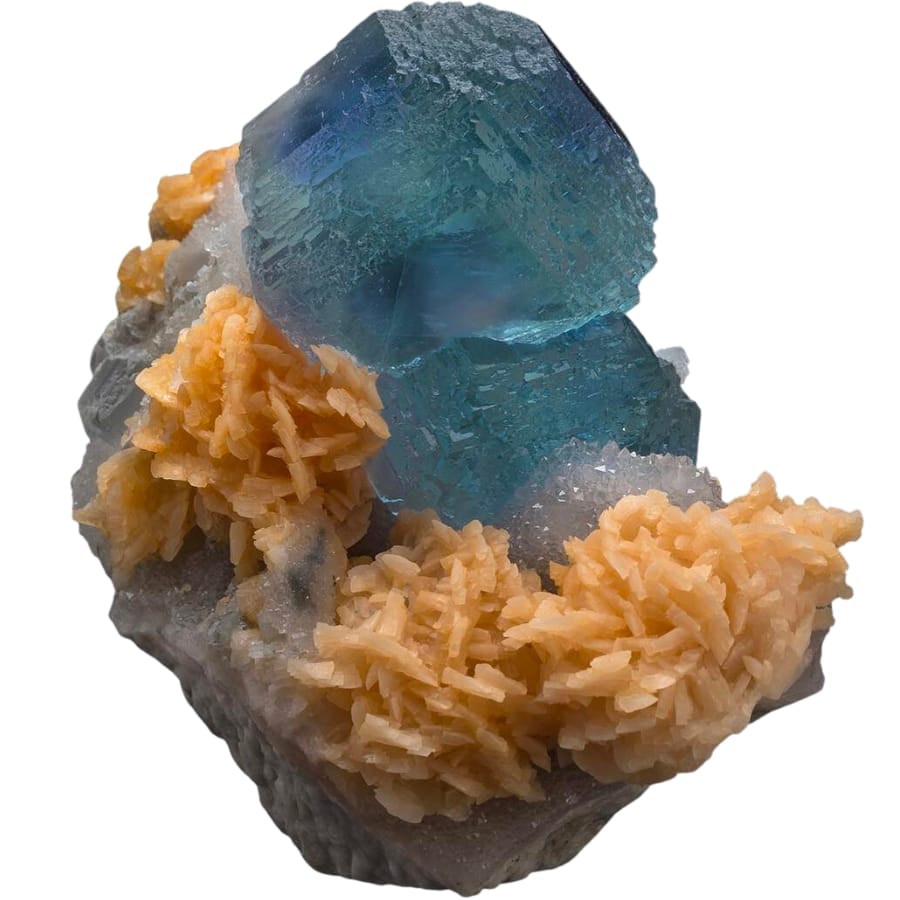
Hardness in minerals is how tough or soft they are. Imagine you have a set of pencils, some with hard leads and some with soft leads. You can tell the difference by how easily they mark paper or how easily they break.
Calcite is softer than dolomite. It may not be super soft, but it’s soft enough that you can actually scratch it with a copper coin. When you press it against paper, it leaves a mark easily, and you can even scratch it with your fingernail.
Calcite’s softness is a big clue when you’re trying to figure out what mineral you have.
Dolomite, accordingly, is a bit tougher. You can still scratch it, but it takes a little more effort. You can’t scratch dolomite with a copper coin like you can with calcite.
Instead, you’d need something a bit harder, like a steel nail. This difference in hardness is a simple way to tell these two minerals apart.
Density – Calcite is less dense
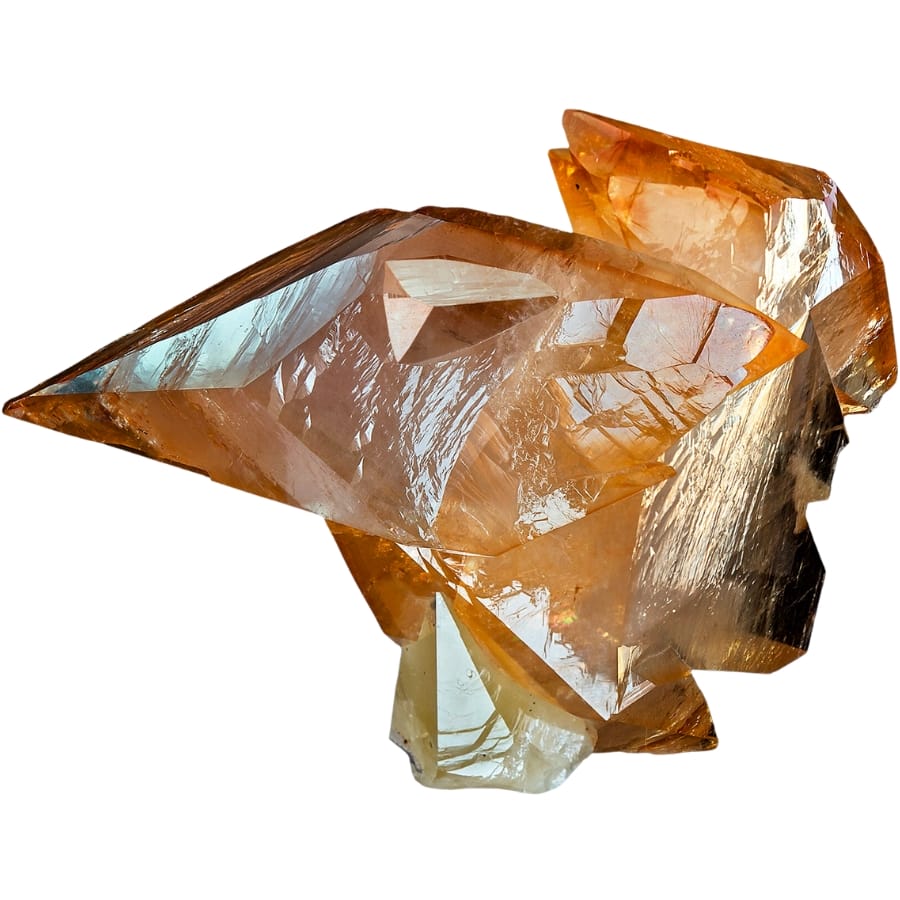
Density in minerals is all about how much stuff is packed into a certain space. Take for example two backpacks that are the same size, but one is packed with heavy books and the other is filled with feathers.
The backpack with books is more dense because there’s more weight in the same amount of space. This idea helps us understand the differences in density between calcite and dolomite.
Calcite is like the backpack with feathers— it’s less dense. Compared to dolomite, it doesn’t weigh as much for its size. If you held a piece of this rock in one hand and a piece of dolomite in the other, both the same size, the calcite would feel a bit lighter.
Dolomite, on the other hand, is like the backpack full of books. It’s denser, which means it feels heavier than calcite if you have two pieces of the same size.
The reason dolomite is denser is because of its ingredients. It has magnesium in it, and this makes it pack more weight in the same space compared to calcite.
Fluorescence – Dolomite is less likely to fluoresce
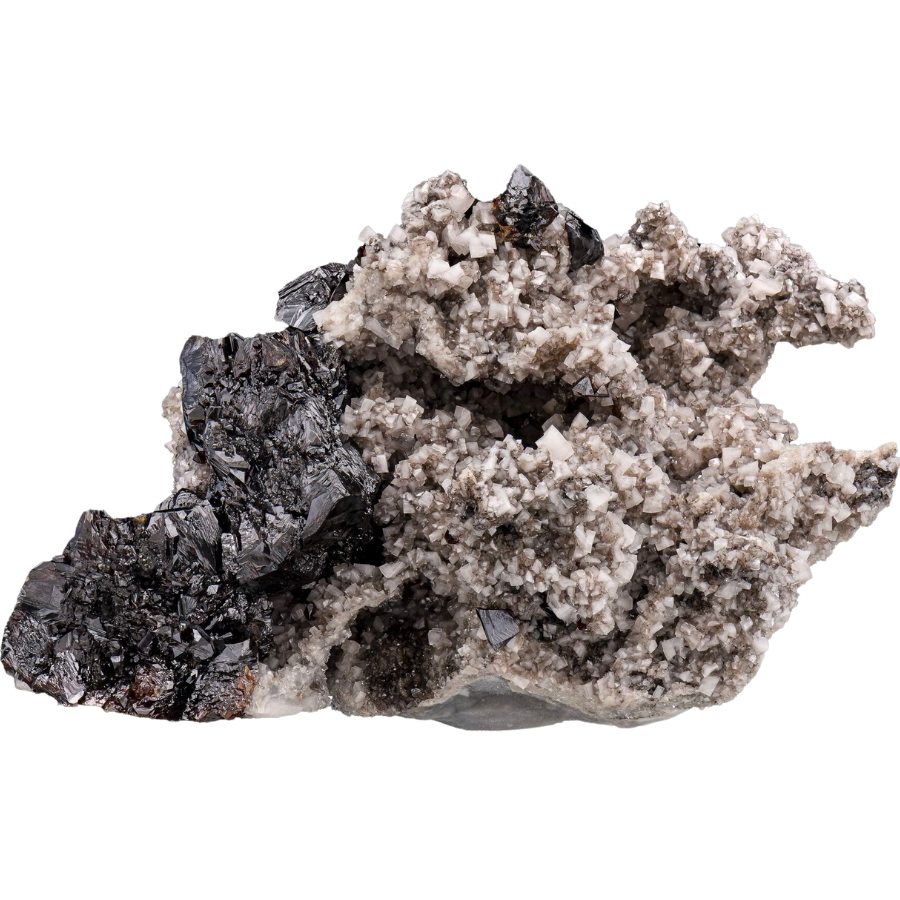
Fluorescence is a property some minerals have, where they glow under ultraviolet light, kind of like how certain posters glow under a blacklight. Calcite and dolomite can both show this awesome glowing trick, but they do it in different ways.
Calcite is like a superstar when it comes to fluorescence. It can glow in a bunch of bright colors like red, blue, or yellow when you shine a UV light on it.
It’s kind of like how glow-in-the-dark stickers light up in the dark, but calcite needs a UV light to show its glowing colors. This feature makes this rock really fun to look at under a blacklight.
Dolomite is more of a mystery when it comes to fluorescence. It can also glow under UV light, but it’s not as common or as bright as calcite.
When dolomite does fluoresce, its colors are usually more subdued, like soft pinks or reds. Not all dolomite will glow under a UV light, though, so when you find a piece that does, it’s pretty special.
Composition – Calcite is composed of calcium carbonate
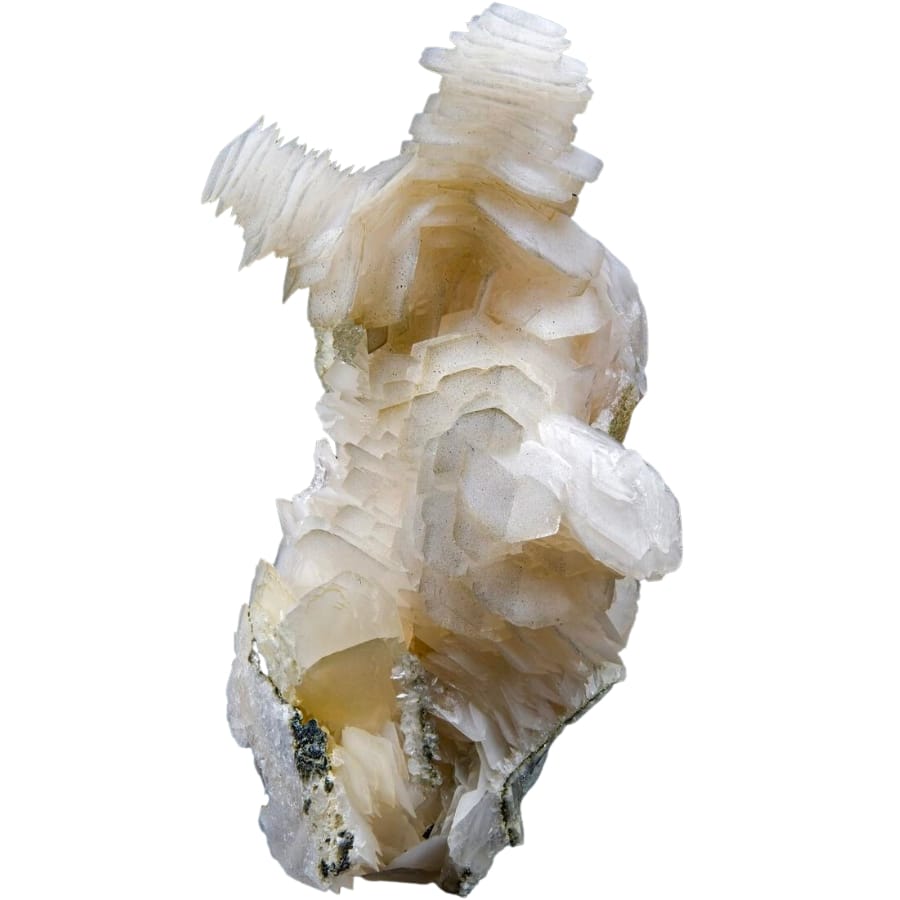
Composition is all about what minerals are made of, kind of like the ingredients in a recipe. Calcite and dolomite have different compositions, so while they look quite similar, their ingredients make them unique.
Calcite is made mostly of calcium carbonate, which means it has calcium, carbon, and oxygen in it.
Calcium carbonate is also what makes eggshells and seashells. That’s why calcite can sometimes feel familiar, like something you’ve seen in a shell at the beach.
Dolomite, on the other hand, has a bit more going on in its recipe. It’s made of calcium magnesium carbonate. It has not just calcium, carbon, and oxygen, like calcite, but also magnesium.
These differences in composition tell us a lot about these minerals. Calcite, with its simpler recipe, is more common and can be found in lots of places. Dolomite, with its extra ingredient of magnesium, is a bit more special and not as common as calcite.
Formation – Many dolomite starts as calcite
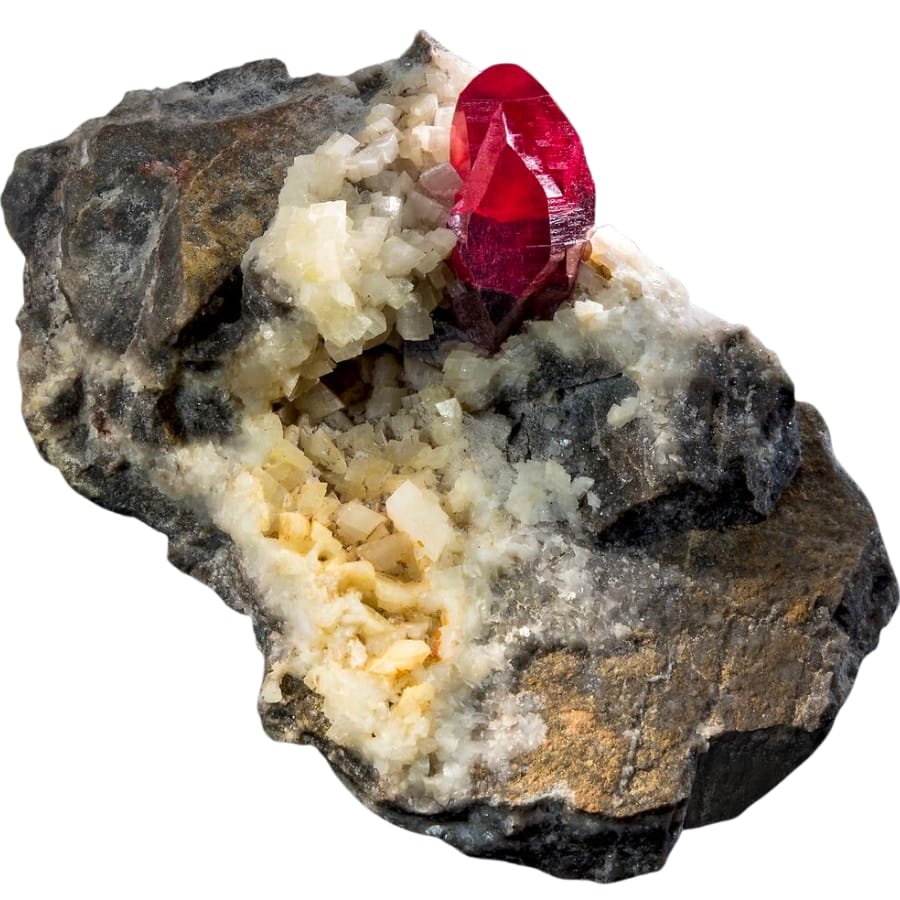
Talking about how minerals form is like telling the story of their life. Calcite and dolomite have different life stories, or ways they form, which makes each of them unique.
Calcite forms in many different places and ways. One of the coolest ways it forms is in caves. Have you ever heard of stalactites and stalagmites that hang from cave ceilings or grow from the floor? They’re actually made of calcite!
This mineral can also form from ocean creatures like clams and oysters. Their shells are made of calcite, and when they die, their shells can pile up and turn into rock over a long time.
Dolomite has a more mysterious story. It often starts its life as calcite. Imagine calcite being the main ingredient in a recipe, and then something else gets added to change it. In dolomite’s case, that something else is magnesium.
This process is a bit like magic and can take a really long time. It usually happens in places where there’s a lot of calcite, like old seafloors or limestone areas.
Location – Calcite is more widespread
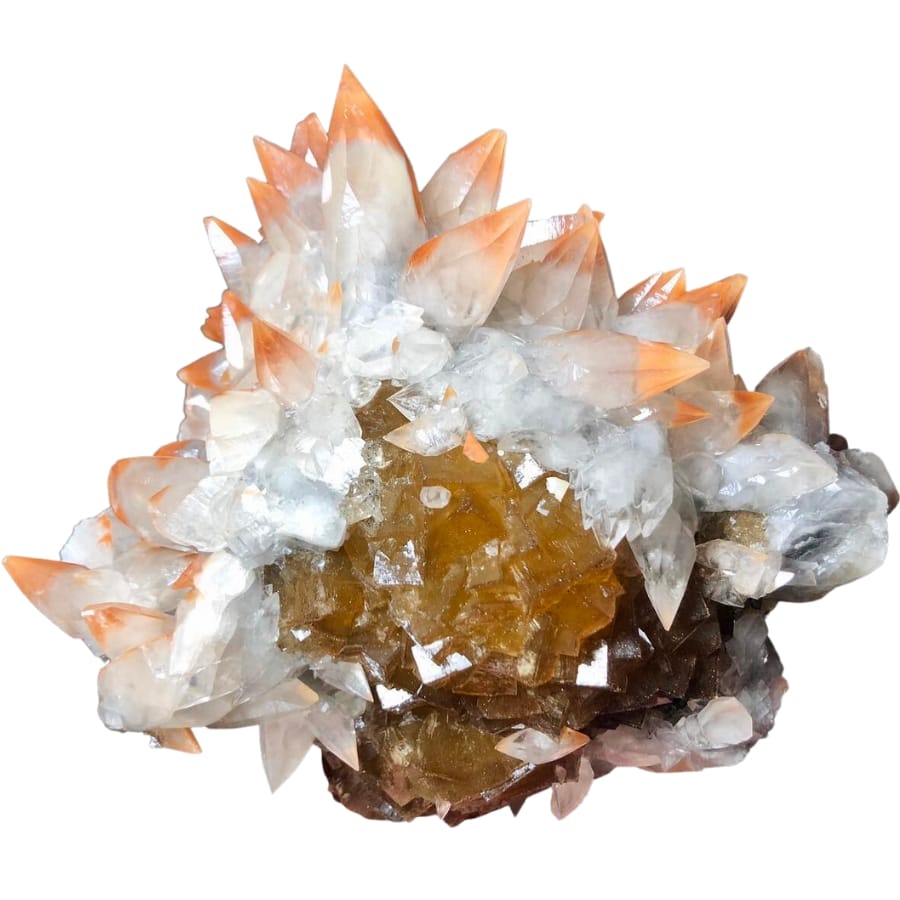
Calcite is kind of a social butterfly in the mineral world. It’s found in a lot of places all over the world. You can find it in caves, making spiky stalactites and stalagmites. It’s also in mountains and even in the ground under your feet.
This mineral is also part of limestone and marble, which are types of rock used in buildings and statues. Because it’s so common, you might say it enjoys being in the spotlight, showing up in many different places.
If you’re curious about where to find calcite in the U.S., check out our article. You can also refer to our guide to the best rockhounding locations here.
Dolomite is more like a friend who likes quieter spots. It’s not as common as calcite. It’s often found in sedimentary basins or places where old layers of Earth have piled up over a long time. Check out the gem mines near you if you want to find dolomite.
You can also find dolomite in limestone, just like calcite, but it’s a bit pickier about where it forms. Dolomite likes to be in places where there was once water, like old seafloors or lakes.
The Similarities
Looking closely alike is not enough to assume that two minerals have more similarities than differences, as comparing dolomite and calcite will prove to you. Below are the only characteristics that they share:
Streak – Dolomite and calcite leave white streaks
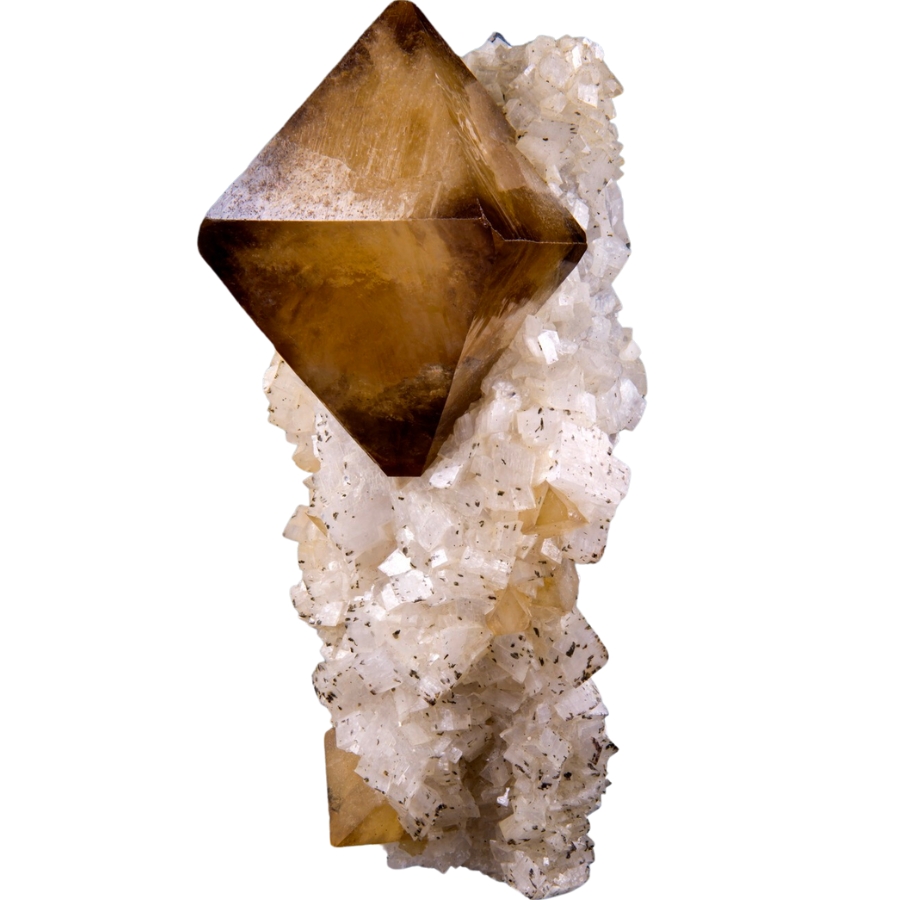
The streak is the color of a mineral’s powder when you rub it on a special plate called a streak plate. Even though calcite and dolomite can look different, they share a cool similarity in their streaks.
Both of these minerals have a white streak. This means when you rub them on a streak plate, they both leave behind a white powder. It’s kind of surprising, especially when you see calcite and dolomite in different colors.
You might find calcite that’s pink, yellow, or even blue, and dolomite that can be gray or pink. But no matter what color they are on the outside, their streaks tell a different story.
This white streak is like a clue that both minerals share. Their outside color doesn’t change what color streak they leave.
Magnetism – Calcite and dolomite are both non-magnetic
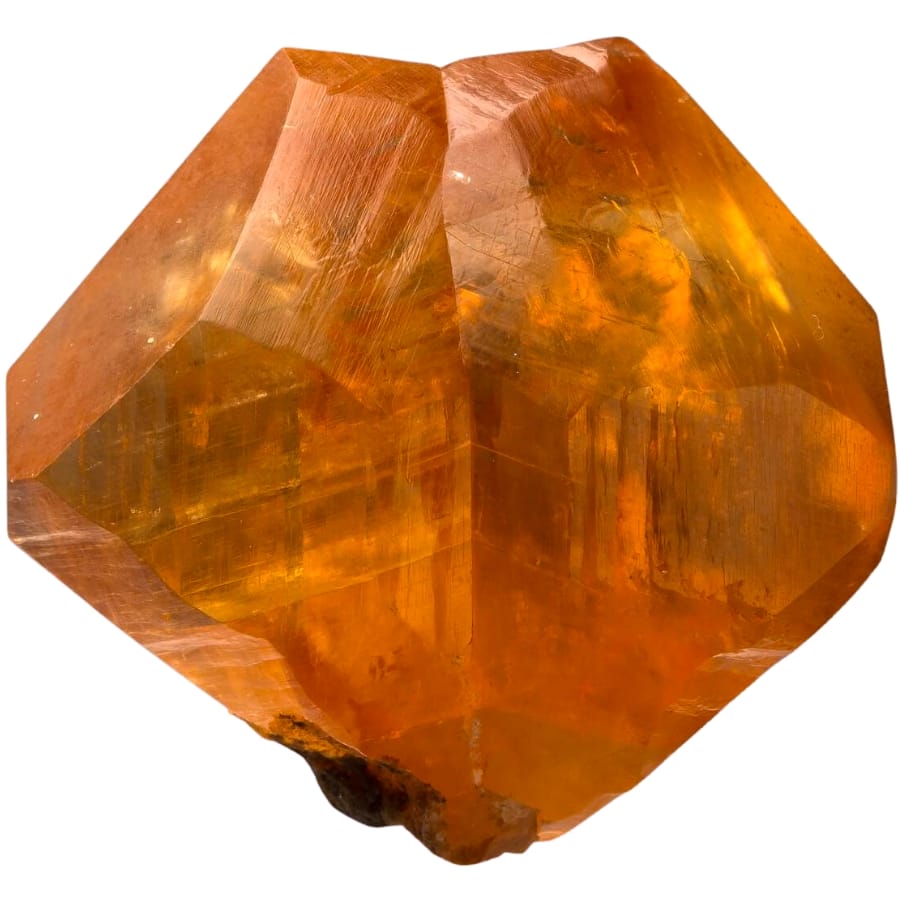
Magnetism is a fascinating thing. It’s like an invisible force that can pull certain metals towards it. But when it comes to minerals like calcite and dolomite, they share a common feature: they are not magnetic.
Think of a magnet like the ones you might use on a fridge. They stick to the fridge because the fridge is made of metal, and magnets love metal.
But if you tried to stick a magnet to a piece of calcite or dolomite, nothing would happen. It would be like trying to make a paperclip stick to a piece of wood. No matter how strong your magnet is, calcite and dolomite just aren’t interested in it.
This lack of magnetism is pretty interesting. Even though they look and feel different, neither of them reacts to a magnet.
This non-magnetic feature is important for geologists and rock collectors. When they see a rock or mineral that doesn’t stick to a magnet, it might be a clue that they’re looking at calcite or dolomite.
Conductivity – Neither dolomite nor calcite is conductive
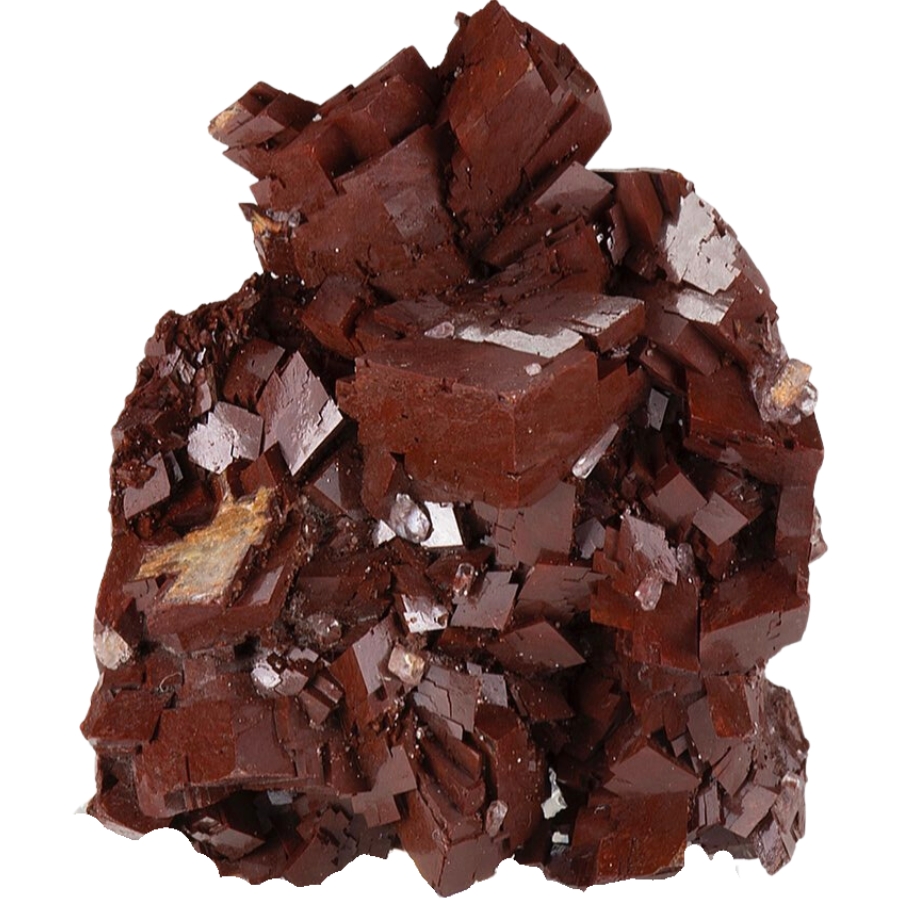
Conductivity is all about how well something can carry electricity. It’s like when you use a wire to connect a battery to a lightbulb. Some things are good at carrying electricity, but calcite and dolomite are not one of them.
Imagine if you tried to make a circuit using calcite or dolomite instead of a wire. The electricity wouldn’t really go anywhere. It’s like trying to use a piece of rubber to connect a battery to a lightbulb.
Both of these minerals are insulators, which are materials that don’t let electricity pass through them easily. This is important in electronics and wiring, where you don’t want electricity going to the wrong place.
Calcite and dolomite are similar because they both act like these insulators. They keep electricity to themselves, not letting it move through them.
Price – Calcite and dolomite generally have similar price ranges
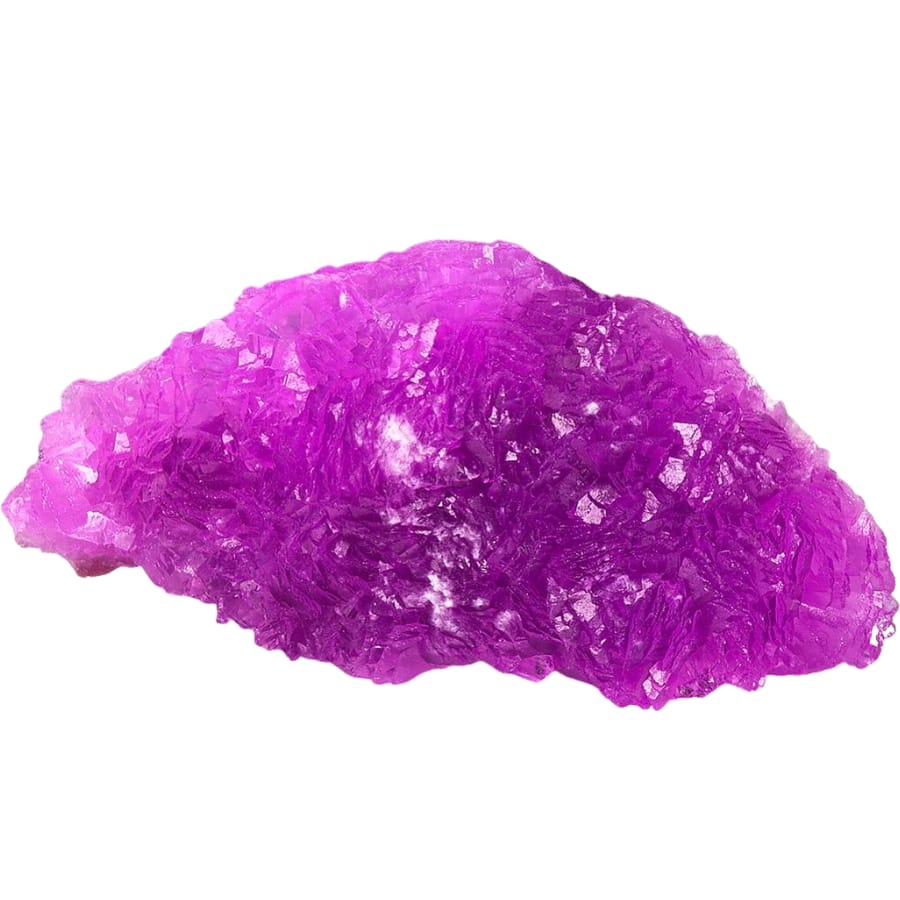
Calcite and dolomite share a similar story when it comes to their prices. They’re both generally pretty affordable. If you’re a rock collector or just someone who likes cool minerals, you won’t have to break your piggy bank to add them to your collection.
Think of calcite and dolomite as common fruits at the grocery store. They’re like apples and oranges, which are usually not too expensive. You can find them easily. The price of calcite is not too high and the price of dolomite is in the same range.
Both of these minerals are found in many places around the world. This is one reason why they’re not super expensive. Since there’s a good amount of them out there, their prices stay pretty reasonable.
But just like with anything, there can be exceptions. Sometimes, you might find a piece of calcite or dolomite that’s really special— maybe it’s super big or has a rare shape or color. In those cases, they might cost a bit more.
The Easiest Ways To Tell Them Apart
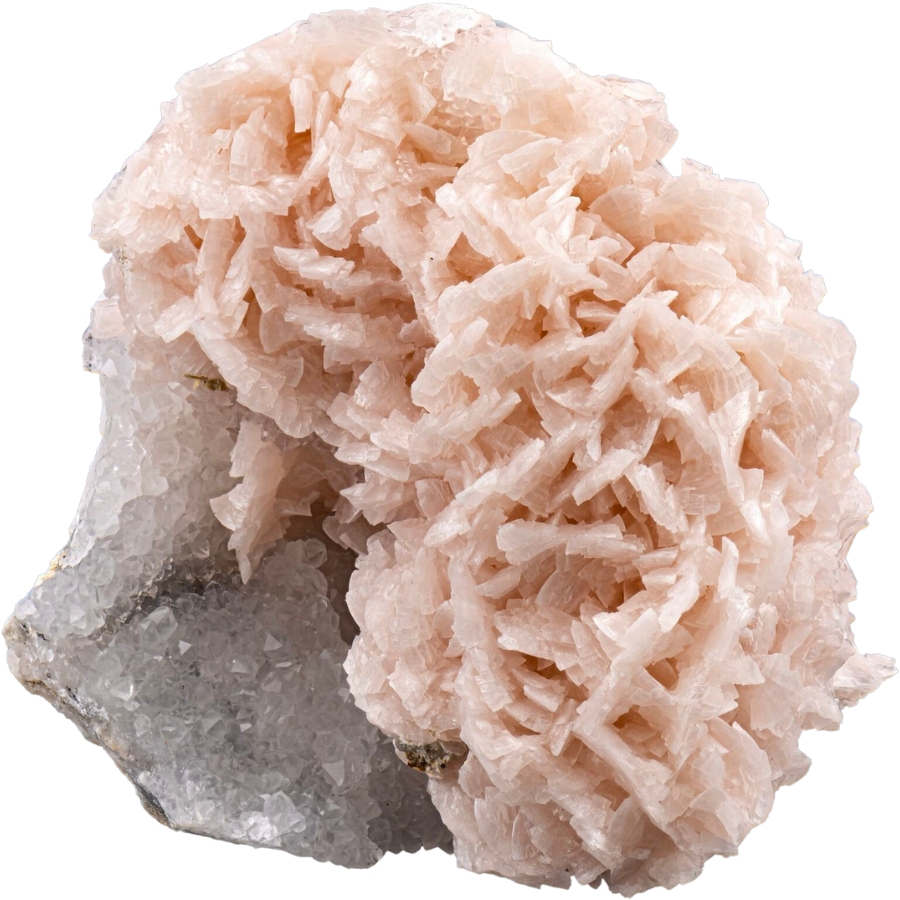
Despite the many differences between calcite and dolomite, it can still be tricky to tell between these two, especially when you’re out in the field where some of their characteristics do not show.
If you want to differentiate these two when you’re in the field, you can do these simple tests and observations:
Do an acid test
The acid test is all about how calcite and dolomite react to acid. For this, you’ll need to have a bottle of weak acid, like vinegar or lemon juice.
When you put a drop of this acid on calcite, it reacts by fizzing and bubbling up. It’s like watching a tiny volcano erupt right on the rock.
This reaction happens because the acid is reacting with the calcium carbonate. It’s a pretty quick and noticeable reaction, which makes it a great clue that you’re looking at calcite.
Now, dolomite is a bit trickier. It’s also made of carbonate, just like calcite, but it has magnesium in it too. When you put acid on it, the reaction is much slower and less obvious. Sometimes, you might not see any reaction at all.
If it happens, the fizzing is more like a slow bubble rather than the quick fizz you see with calcite. This slower reaction is because the acid has to work harder to react with the dolomite, thanks to the magnesium in it.
Test its hardness
This involves checking how easily the minerals can be scratched, and this can be a big clue in telling calcite and dolomite apart.
Calcite, as we’ve discussed above, is softer so it can be scratched pretty easily. You could use a copper coin to scratch it. This mineral gets marked or scratched without much effort.
Dolomite, on the other hand, is a bit harder, so you’d need something a bit harder than a copper coin, like a steel nail, to scratch it.
Check its color and luster
Another great way to distinguish calcite and dolomite is by paying attention to their color and how they shine.
Calcite is known for its wide range of colors like white, clear, pink, blue, green, and yellow. This vibrant array is like a colorful palette. Besides its color, calcite has a glass-like shine. This combination makes it pretty distinctive.
Dolomite, in contrast, tends to have more subdued colors like shades of white, gray, or pink. These colors are generally not as vivid as those of calcite. In terms of luster, it has a pearly or matte appearance, which is less glossy.


